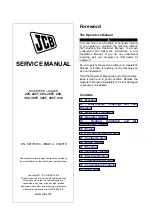
Southworth PalletPal Stack-n-Go / FPS3000-43NFO-21/27
11
SOUTHWORTH
OPERATION
A. OPERATING INSTRUCTIONS:
AUTHORIZED OPERATORS SHOULD READ
AND UNDERSTAND ALL INSTRUCTIONS,
PRECAUTIONS AND WARNINGS.
IMPROPER USE OF THIS LIFT TRUCK
COULD RESULT IN INJURY AND/OR
DAMAGE TO LOAD AND EQUIPMENT.
To Raise and Lower:
There are two buttons located on both sides of the
handle. The inside one is for raising the forks. The
outside one is for lowering the forks. When operating,
always make sure the load being lifted is within the
loading capacity of your stacker and the load has been
stacked safely on the pallet. Also, make sure that the
length of the forks corresponds to the length of the pal
-
let. In this way, the load rollers will place themselves
in the opening at the end of the pallet, so that when you
raise the forks, you will not break the bottom boards
of the pallet. Always make sure that when entering the
pallet that the forks are in the fully lowered position.
Be careful when lifting pallets that are too short or too
long for the stacker. It might destroy your pallet by
breaking the bottom boards, and if the forks project
through the end of the pallet, the tips of fork may go
into the next pallet that is behind the pallet that you are
lifting, which may bend the tips of forks and overload
the capacity of the stacker.
Travel Function:
To travel, rotate the butterfly controls throttle on the
upper part of the handle. When rotating the butterfly
control CW towards the forks, the stacker runs forwards
in the forks first direction. When rotating the butterfly
CCW towards you, the stacker runs backwards in the
handle first direction. Always make sure the stacker
clears any obstruction when traveling, and that your path
of travel is clear of people. Never carry loads above the
loading capacity of the stacker. It is suggested that when
traveling without a load, the forks be in the lowered
position. The speed of the stacker is increased by the
degree of the rotation in either direction; it functions
like a throttle. When you release your hand from the but
-
terfly control, it automatically will resume to the neutral
position and the speed of the stacker will slow down.
Electric Brake:
Your stacker is equipped with an electric magnetic
brake. The brake is applied when the handle is in its
vertical position between 10 – 15 degrees and lowered
position between 80 – 90 degrees. The brake could be
released when you pull down the handle at any point
between 15 – 80 degrees. Always make sure the brake is
released before operating the stacker. When the stacker
is running, you could brake the stacker by raising the
handle to its vertical position or lowering the handle to
its lowest position. Or, to turn the butterfly controls in
the opposite direction, the change in direction of the
motor will slow down, stop, and reverse the direction
of stacker.
When parked
, always put the handle in the
full vertical position with the brake applied and the
forks in lowered position.
Reversing Safety:
At the end of the handle there is a large, red reversing
bar (belly button switch) that is designed to protect
the operator from injury. When the operator runs the
stacker backwards, and the end of the handle comes
in contact with the operator’s body, the stacker will
automatically reverse direction and travel away from
the operator. When the reversing safety bar comes in
contact with your body during operation, immediately
release your hands from the butterfly control and put the
handle up to its vertical position or down to its lowest
position and the brake is on. The reversing safety bar
will automatically resume to its original position after
being activated.
Horn:
As standard equipment, a horn that is located on the
top of the handle.






























